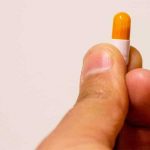Dilaudid oral tablets and oral solutions are a type of brand name medication containing the powerful opioid pain reliever hydromorphone.
Like other opioids, hydromorphone may be compounded in a variety of different forms, including intravenous injections and rectal suppositories.
In the same way, those abusing hydromorphone to get high may modify hydromorphone medications, taking them through alternate routes in order to increase the drug’s euphoric effects.
Plugging Dilaudid by taking the medication through rectal administration is one such strategy.
Plugging Dilaudid & Opioid Abuse
Taking drugs, including opiates and prescription opioids like hydromorphone, through different routes of administration greatly changes the speed of the effect, the intensity of the effect, bioavailability, and length of effect.
Plugging, also known as boofing or booty bumping, offers less intensity of effect than injection or snorting. Nevertheless, it bypasses the digestive system to provide a faster, more intense, and shorter-lived effect than normal oral use of Dilaudid, with a range of potential side effects.
It’s important to also note that while plugging may not be harmless, it is sometimes recommended as a harm-reduction strategy to reduce the risk of infection and other adverse effects associated with drug injection or snorting.
Effects Of Plugging Dilaudid
When plugged, Dilaudids effects can include:
- a short-lived euphoric high
- increased bioavailability, meaning that more of the drug will be absorbed into the body compared with the same dose taken orally
- drowsiness
- impaired thinking and coordination
- mood swings as the drug’s effects increase and decrease
- nausea and vomiting
- sedation, including slowed breathing and heart rate
- changes in blood pressure
Dangers Of Plugging Dilaudid
Even though plugging is sometimes used as a form of harm reduction, it remains a risky and potentially harmful avenue for drug abuse.
Potential short-term and long-term risks of rectal hydromorphone abuse include:
- rectal irritation and infections
- rectal tissue damage
- severe constipation
- persistent diarrhea
- circulation problems
- brain and memory dysfunction
- increased risk of physical dependence and/or addiction
- increased risk of overdose
Dilaudid Overdose
Plugging increases both the dose a person receives and the rate at which it is absorbed into the body through the blood vessels of the rectum.
These paired effects greatly increase a person’s risk of harmful or even life-threatening overdose.
This risk increases further if multiple doses are taken in sequence, or if Dilaudid is taken with other substances of abuse, including alcohol and benzodiazepines, that result in harmful drug interactions.
Opioid overdose symptoms are generally similar no matter what opioid painkiller is taken, whether illicit opioids like fentanyl or heroin, or more common prescription drugs including oxycodone or hydromorphone.
Signs and symptoms of opioid overdose can include:
- blue-tinted fingernails and lips
- breathing problems
- clammy skin
- pinpoint pupils
- severe drowsiness
- loss of consciousness
- muscle twitching
- nausea and vomiting
- slow heart rate
- weakness
- weak pulse
If the drug’s effects on a person’s breathing become too severe, respiratory depression, brain and organ damage, or death may result as the body is deprived of oxygen.
If you suspect an overdose has occurred, immediately administer the opioid antidote naloxone (Narcan) and call your local emergency medical services.
Dilaudid Addiction Treatment Options
The longer substance abuse continues, the greater the risk of severe physiological dependence and addiction.
However, specialists and healthcare providers have developed a wide range of treatment options to support and care for those who struggle with compulsive drug use, including:
- medical detox and tapering programs to help individuals work through withdrawal symptoms
- inpatient and outpatient treatment programs
- medication-assisted treatment (MAT) programs using methadone, buprenorphine, or naltrexone
- cognitive-behavioral therapy (CBT)
- motivational enhancement therapy (MET)
- individual and group counseling
- peer support groups
- aftercare support and case management
For information on our outpatient substance use treatment programs, please contact us today.
Sources
- Food and Drug Administration (FDA) — Dilaudid® Highlights of Prescribing Information
- National Library of Medicine: MedlinePlus — Hydromorphone
- National Library of Medicine: MedlinePlus — Opioid Overdose
- Pharmaceutical Research — Pharmacokinetics and bioavailability of hydromorphone: effect of various routes of administration
Written by
Northeast Addition Editorial Team
©2024 Northeast Addition Center | All Rights Reserved
This page does not provide medical advice.









